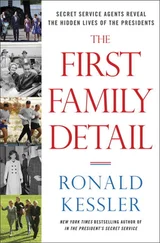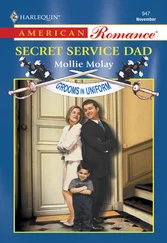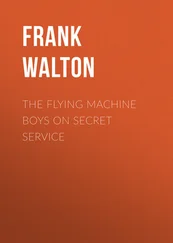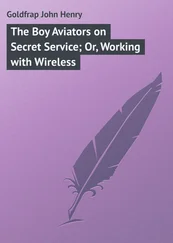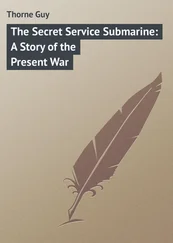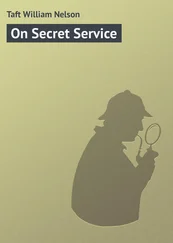While the vice president’s protective detail now has a hundred fifty agents and the president’s detail has three hundred agents, the details are stretched thin. These same agents undertake advance work for trips that often take place every day. With the 2008 presidential campaign being the longest in history, demands on the Secret Service went through the roof.
While the Secret Service receives modest budget increases, the annual appropriation is still a mere $1.4 billion—less than the cost of one stealth bomber. About a third of the budget goes to investigating crimes such as counterfeiting, check fraud, fraudulent use of ATM cards or credit cards, identity crimes, and computer-based attacks on the nation’s financial, banking, and telecommunications infrastructure. Likewise, about a third of the Secret Service’s agents are assigned to investigative work, but that figure is misleading because agents doing such work in field offices are routinely pulled off their assignments for protection work. In man-hours, slightly more than half of agents’ time is devoted to protection. Because it can boast of arrests, the 6,489-employee Secret Service keeps expanding its jurisdiction in the investigative areas.
To be sure, the Secret Service’s work on financial crimes is impressive.
Back in 1983, when Secret Service director Mark Sullivan started out as an agent, “When we picked up credit card fraud, a sophisticated credit card fraud back then would be somebody going to a dumpster behind some restaurant and diving in and getting somebody’s credit card numbers out of the dumpster,” Sullivan tells me.
Another scheme would be to steal an embossing machine from a hospital.
“They’d print a credit card number and somebody’s name on there,” Sullivan says. “And you know, you’d look at the credit card number, and it would be going like diagonally down the card. And that was a sophisticated credit card fraud.”
Now the Secret Service is up against the most sophisticated cyber criminals. Learning about the investigative side of the agency is enough to scare anyone. Counterfeiters have become so devious that bank tellers who are trained to spot fake bills can’t detect counterfeits even using a magnifying glass. Waiters with so-called skimmers swipe your credit card before they submit it for payment of your check. The encoded information on the magnetic strip is stored and then sold for twenty dollars per credit card.
On websites, criminals can buy the numbers imprinted on stolen credit cards. They can also fool banks into handing over all the money in your checking account, not to mention siphoning cash from ATMs. Phishing—fraudulently extracting money from people online—has been increasing at a rate of as much as 4,000 percent a year.
Then there are the Nigerian fraud artists who promise to make people rich, then wipe out their life savings. Some victims revictimize themselves: After losing most of their money, they fall for the scheme all over again. Nigeria prints and ships boxes of counterfeit treasury checks to the United States. Since the Nigerian government is often complicit, the Secret Service has closed its office in Lagos.
The North Korean government counterfeits U.S. currency using high-pressure intaglio presses that are about as good as those of the U.S. Bureau of Engraving and Printing. Other counterfeits are made with offset or flatbed presses or digital printers, which make the crudest counterfeits. About one in ten thousand bills in circulation is counterfeit. Most of them are hundred-dollar bills. Because counterfeit U.S. currency is so prevalent, banks and currency exchangers in many Asian countries refuse to accept U.S. bills.
Thefts of credit card numbers have become so widespread that “You have already been compromised; they just haven’t gotten around to using your number,” Tom Lascell of the criminal investigative division says reassuringly. “We used to think holograms on credit cards made them safe,” he says. He then holds up a photo of dozens of credit cards for sale with holograms.
Investigations by the criminal side of the agency sometimes lead to strange findings. In 1986, Patrick Sullivan and other agents learned from an informant that Gregory Scarpa, Sr., a capo, or captain, in the Colombo Mafia family, was involved in creating counterfeit credit cards. After Sullivan arrested him, he was driving him to the Secret Service field office in New York when Scarpa asked Sullivan to stop the car.
“We pull over, and he tells us he is the highest-level Mafia informant in the FBI,” Sullivan recalls. At the time, Sullivan was the Secret Service’s representative to the Department of Justice’s Organized Crime Strike Force in Brooklyn. He knew Scarpa was a prime target of the strike force.
“I was stunned,” Sullivan says.
As later documented in court filings, Scarpa revealed that for at least twenty years, he had betrayed to the bureau secrets about the Mafia—including murders planned and committed. Moreover, Scarpa disclosed that at the behest of the FBI, he terrorized a Ku Klux Klan member into disclosing where the bodies of three civil rights workers who were murdered in 1964 were buried in Mississippi.
As important as the criminal side of the Secret Service is, with the exception of counterfeit currency investigations, the FBI investigates the same crimes. Each agency pursues leads it happens to receive. Yet the Secret Service seeks greater jurisdiction in these areas even as protection demands increase.
From its early days, the Secret Service’s culture dictated that the job got done, regardless of obstacles. While that ethic is admirable, taking on more duties without enough resources is not. Rather than taking a long-range view and making waves by demanding the necessary funding or shedding jurisdiction in some areas, Secret Service management makes do, boasting, “We do more for less.”
The result, according to current and former agents, is that since it became part of DHS, the Secret Service has been cutting corners and covering up deficiencies to the point where the security of the president, vice president, and presidential candidates is compromised.
“They will cut a protective detail down to the bone to save on costs, but throw every agent into an operation that will result in arrests,” an agent says. “The service either needs twice as many agents or half as much responsibility. The priorities are all messed up.”
Some of those compromises are a result of the turnover rate that, in turn, stems from senseless transfer policies. Because so many agents are leaving before retirement, less experienced agents remain to do the job. On the vice president’s detail alone, agents are being brought in from the counterassault team to stand protective duty.
“This acknowledges that we are losing people and now have to borrow from other divisions just for our daily activities,” an agent on one of the major details points out. “I have never seen them have to resort to doing this.”
Even more shocking, for presidential candidates and many protectees below the president and vice president, the counterassault teams themselves have been slashed in the past few years from the requisite five or six agents to only two agents.
“CAT is trained to operate as a full team of five to six men,” a current agent who was formerly on CAT says. “Each member has a specific function based upon the direction of the attack. A two-man element responds to the problem, while another responds to the attack with a base of fire—providing cover fire and trying to suppress the attackers—while the other element moves on them to destroy them. The other two-man element—or solo member, if there are only five operators—provides coverage in the rear and assists the element that is moving to address the attack.”
Читать дальше

